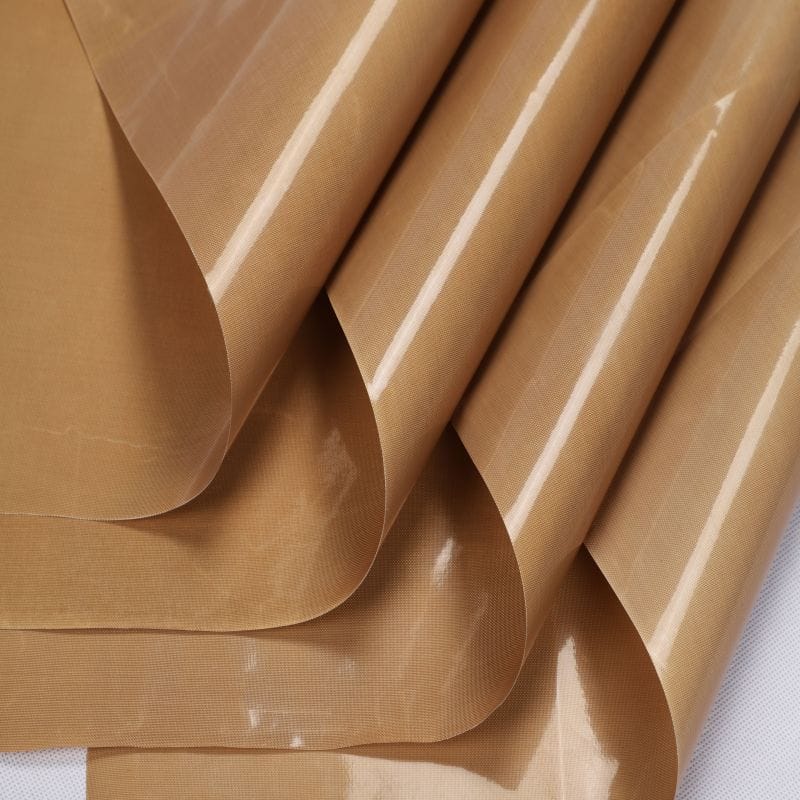Teflon-Coated Fiberglass Fabric: The Non-Stick, Heat-Resistant Workhorse for Industry and the Kitchen
Official Website: https://advancetex.co/
Learn more about Silicone Coated Fabric: https://advancetex.co/category44/
Learn more about PTFE Coated Fabric: https://advancetex.co/category175/
More product videos: https://www.youtube.com/@AdvanceTex0203/videos
Find out more: Teflon-Coated Fabric
When you think of Teflon, non-stick cookware likely comes to mind. But this remarkable material, when combined with fiberglass to create Teflon-coated fiberglass fabric (PTFE-coated fiberglass fabric), extends its usefulness far beyond the kitchen. With its exceptional non-stick properties, high-temperature resistance, chemical resistance, and dimensional stability, this composite material (often seen in a characteristic brown color) has become a crucial component in numerous industrial and food processing applications.
Understanding Teflon-Coated Fiberglass Fabric
The outstanding performance of this material stems from its two-part structure:
- Fiberglass Base Fabric: Provides strength, dimensional stability, and inherent heat resistance. Fiberglass itself is an excellent insulator and can withstand temperatures up to 550°C (1022°F).
- PTFE (Polytetrafluoroethylene) Coating: Imparts the fabric's signature non-stick properties, extremely low coefficient of friction, exceptional chemical resistance, and a wider temperature range (typically -73°C to 288°C, or -100°F to 550°F). PTFE's strong C-F bonds make it incredibly stable and resistant to reaction with most other substances – the secret behind its "non-stick" and corrosion-resistant nature.
The manufacturing process involves coating the fiberglass fabric with a PTFE dispersion or emulsion, followed by high-temperature curing to solidify the PTFE and create a strong bond.
Why is it so Important? Key Properties Explained
- Superior Non-Stick Properties: PTFE's extremely low surface energy means almost nothing adheres to it.
- Exceptional Heat Resistance: Maintains performance stability at extreme temperatures.
- Outstanding Chemical Resistance: Highly resistant to strong acids, bases, organic solvents, and other corrosive substances.
- Low Coefficient of Friction: The incredibly smooth surface minimizes friction, improving efficiency.
- Dimensional Stability: The fiberglass base ensures the material resists deformation under heat or stress.
- Easy to Clean: The non-stick surface requires only a simple wipe-down.
- Food-Grade Safe: FDA-compliant versions of Teflon-coated fabric are safe for direct food contact.
Applications: Beyond the Frying Pan
Teflon-coated fiberglass fabric has a vast range of applications. Here are some key examples:
-
Industrial Conveyor Belts: In food processing (baking, freezing, drying), plastics, textiles, printing, and electronics, Teflon conveyor belts are ideal. Their non-stick nature prevents product adhesion, heat resistance allows use in ovens and curing furnaces, and low friction ensures smooth transport. Teflon belts are available in mesh (for airflow) or solid forms.
-
Mold Release: In rubber, plastic, and composite molding, Teflon fabric acts as a release sheet. It prevents the molded product from sticking to the mold, ensuring easy release, improving product quality, and extending mold life.
-
Heat Sealing and Packaging: In plastic bag sealing machines and shrink-wrapping equipment, Teflon fabric covers the heating elements. This prevents the plastic film from melting and sticking, ensuring a clean and strong seal.
-
Baking and Food Processing: Beyond conveyor belts, Teflon fabric is widely used for baking mats, oven liners, and tray liners. It prevents food from sticking, reduces the need for oils, is easy to clean, and is reusable. FDA-compliant versions are used in various other direct food contact applications.
-
Laminating and Pressing: In manufacturing printed circuit boards, solar panels, and composites, Teflon fabric serves as a press pad liner in laminating presses. It provides even pressure and temperature distribution and prevents resins from adhering to the press plates.
-
Chemical and Corrosion Protection: Due to its outstanding chemical resistance, Teflon fabric can be used as a liner for chemical tanks, a wrapping material for pipes, or for fabricating corrosion-resistant gaskets and seals.
-
Heat Transfer Printing: In garment and textile printing, Teflon fabric acts as a protective sheet, preventing ink from sticking or scorching during heat transfer processes.
-
Laboratory and Research: PTFE coated fiberglass can protect the lab bench from chemical and be used as release sheet during various tests.
Selection and Maintenance Tips
- Thickness and PTFE Content: Choose the appropriate thickness and PTFE coating level for your specific application. Thicker fabrics are more durable, while higher PTFE content enhances non-stick properties.
- Surface Texture: Smooth surfaces are best for maximum non-stick; textured surfaces offer better grip for some conveyor applications.
- Food-Grade Certification: If used in food contact, ensure the fabric meets FDA or other relevant food safety standards.
- Cleaning: Usually, a damp cloth or sponge is sufficient; avoid sharp or abrasive cleaning tools.
- Storage: Store flat or rolled to prevent creases.
Conclusion
Teflon-coated fiberglass fabric, with its remarkable combination of properties, plays an increasingly vital role in both industrial production and everyday life. It enhances efficiency, reduces costs, and contributes to food safety and environmental protection. As technology continues to evolve, the applications of this versatile material are only expected to expand.

